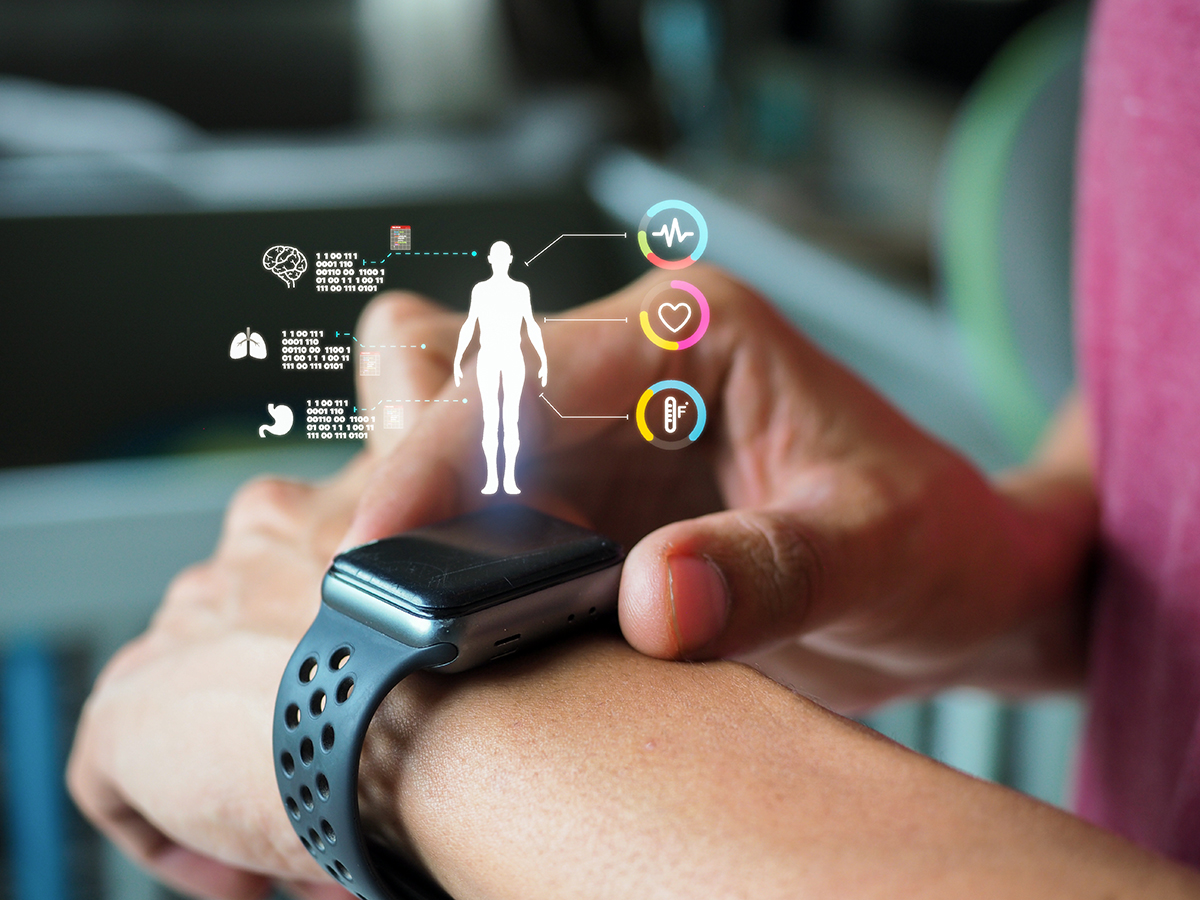
Designing the Future of Digital Healthcare: Empowering Patients Through User-Centric Experiences

Recent research released by Abbott Laboratories shows that 72% of patients want more personalized care, specifically tailored to their unique clinical needs. As digital healthcare solutions become increasingly prevalent, the focus on providing a seamless and engaging user experience has never been more crucial. Designing user-centric digital healthcare platforms can enhance patient engagement, improve outcomes, and empower individuals to take control of their own well-being.
Several key advancements in technology and users’ expectations are shaping the future of experience in healthcare, including designing for inclusivity, creating omnichannel experiences, personalizing the digital healthcare network, and achieving interoperability, all while remaining compliant.
Also Read: Creating Data-Driven Digital Front Doors for Healthcare Payers
Understanding the Patient and Their Journey
Seasoned designers should develop a deep comprehension of the complete patient experience, spanning from the moment a healthcare issue first arises to the post-treatment phase. This will enable them to pinpoint critical interaction points where digital solutions can elevate the individual’s overall journey.
Throughout this process, starting with empathy for our users allows us to put ourselves in the shoes of the patients so that we can more effectively create personalized designs. Additionally, conducting user research, interviews, and observational studies plays a vital role in shaping our design choices.
Also Read: Top 3 Use Cases of AI From a Healthcare Technology Leader
Inclusive Design
As a UX professional, our goal is to remove barriers and accommodate diverse needs, ensuring that everyone can fully participate. Inclusive design, when applied to digital healthcare, is an approach of designing and developing healthcare software, applications, and platforms that are accessible, usable, and inclusive for all users regardless of their physical or cognitive abilities, backgrounds, and needs.
Within healthcare, inclusive design goes beyond meeting basic accessibility guidelines. It involves a comprehensive approach that considers the entire user’s experience, for instance:
Language
We should use plain language to ensure that medical information and instructions are easily understood by users with diverse literacy levels. We should also consider providing support for multiple languages that cater to a culturally diverse user base.
Accessibility
When it comes to accessibility, we should go beyond our design and provide accessible user documentation and support materials that are easy to understand and available in multiple formats. This can include FAQs, video tutorials, and other resources to assist users in getting the most out of the software.
Also Read: Transformative Power of AI and Intelligent Automation in Pharmacovigilance
Cultural Sensitivity
Consider cultural differences in healthcare practices and beliefs when designing inclusive software that is respectful of diverse cultural backgrounds. Try to maintain a standard that is understandable by most people, regardless of their background.
Inclusive Testing
Conduct usability testing with a diverse group of participants, including those with disabilities, to identify and address potential usability issues. Then, regularly test your digital products and features with real users to gather feedback on the overall user experience.
Feedback Mechanisms
Implement clear and timely feedback mechanisms to inform users about the status of their actions, especially in critical healthcare scenarios. Take time to ensure that error messages are easy to understand and provide proper guidance on how to resolve these issues.
Also Read: Transformative Power of AI and Intelligent Automation in Pharmacovigilance
Omnichannel Experience
Creating a seamless experience between platforms, portals, and applications is the goal of omnichannel design. Develop a design system that encompasses all UI (User Interface) components, patterns, and interactions used across various digital channels. This includes buttons, form elements, cards, navigation menus, and other common UI components.
A design system promotes standards and consistency, providing a centralized library of reusable components that designers and developers can use across channels. By removing barriers to access and bridging gaps between platforms, we empower individuals to seek timely medical advice and support without having to learn to navigate the user interface from device to device.
Therefore, customization is a crucial aspect of design in digital healthcare. By providing users with the ability to tailor the software according to their specific needs and preferences, the user experience becomes more adaptable, accommodating diverse requirements, and enhancing overall usability.
One can create inclusive designs with following customizations:
Text-to-Speech and Speech-to-Text: Features that enable text-to-speech functionality for users with reading difficulties or speech-to-text for those who have trouble typing.
Alternative Input Methods: Multiple input method options, such keyboard, mouse, touch, and voice, to cater to users with different physical abilities.
Gesture Customization: Allow users to customize gestures, touch sensitivity, or enable alternative interaction methods to accommodate individuals with motor impairments.
Captioning and Translations: Include support for captioning and multiple language translations in multimedia content to cater to users with hearing impairments and those who speak different languages.
Adjustable Audio and Visual Alerts: Audio and visual alerts to suit their preferences and ensure critical notifications are accessible to all.
Data Privacy and Security Settings: Implement robust data privacy settings, allowing users to control the level of data sharing or access by healthcare providers, based on their comfort and needs.
Compatibility with Assistive Technologies: Ensure that the application is compatible with popular assistive technologies, such as screen readers or adaptive input devices.
Personal Health Goals: Enable users to set and track their personal health goals, fostering a sense of ownership and motivation in managing their health.
Reminders and Notifications: Allow users to customize reminders and notifications to suit their routines and preferences, supporting adherence to medical plans.
Adjustable Font Sizes: This feature allows users to change the size of text and it is especially valuable for individuals with visual impairments or those who simply prefer larger or smaller text for better readability.
Color Contrast: Customizable color contrast settings enable users to modify the colors used in the interface. This is vital for individuals with color blindness or low vision.
Tailored Content: This involves providing users with personalized information based on their medical history, preferences, or current health status. Customized content can include medication reminders, relevant articles, or specific treatment plans.
Theme Customizations: Theme customization includes color schemes, layouts, and graphical elements. This feature not only caters to personal aesthetic preferences but can also be used by users with specific visual or cognitive needs.
Incorporating these customization options into digital healthcare design fosters a user-centric approach, enhancing the overall usability, accessibility, and inclusivity of the application. Moreover, it demonstrates a commitment to meeting the diverse needs of patients and healthcare professionals, contributing to improved patient engagement and better healthcare outcomes.
Also Read: Healthcare Price Transparency: A Win-Win for Providers and Payers
Seamless Integration and Interoperability
In an increasingly interconnected healthcare ecosystem, seamless integration and interoperability between different digital healthcare platforms are essential. Designers must consider the interoperability of their solutions to ensure smooth data exchange between electronic health records, wearable devices, and other healthcare systems. This interoperability facilitates comprehensive care coordination and a holistic view of patients’ health.
Designing with Compliance
When creating healthcare software, designers need to adhere to various compliances and regulations to ensure the privacy, security, and accuracy of patient data. Here are some of the key compliances that designers typically must follow:
- Health Insurance Portability and Accountability Act (HIPAA): HIPAA sets standards for the protection and confidentiality of patients’ health information. Designers must ensure that the software meets HIPAA requirements, such as implementing robust data security measures, access controls, encryption, and audit trails to safeguard patient data.
- Clinical Decision Support (CDS) Software: CDS software assists healthcare professionals in making clinical decisions. Designers developing CDS software need to comply with the regulatory framework set by the FDA (Food & Drug Administration), which includes meeting specific requirements for accuracy, transparency, and safety.
- Electronic Health Records (EHR) Standards: Designers involved in creating EHR software need to ensure compliance with standards such as HL7 (Health Level Seven) and the Consolidated Clinical Document Architecture (C-CDA) to enable interoperability and exchange of health information.
Compliance with these regulations not only ensures legal and ethical obligations are met but also contributes to building trust and reliability in healthcare software by protecting patient privacy and promoting data security.
The Main Goal: Improving Patients’ Healthcare Experience
Apexon builds exceptional digital experiences that translate to exceptional outcomes and understands that designing user-centric digital healthcare software is crucial for enhancing patient engagement, improving outcomes, and empowering individuals. It starts with understanding the patient’s journey and applying inclusive design principles to ensure accessibility and usability for diverse users.
Creating an omnichannel experience and seamless integration between platforms enables easy navigation and consistent branding. Personalization allows users to tailor the software to their needs, while compliance with regulations ensures data privacy and security. By incorporating these principles, designers can create impactful, user-centered digital healthcare solutions that improve patient experiences and advance healthcare as a whole.
To learn more, check out Apexon’s Patient Engagement accelerator or get in touch directly using the form below.




